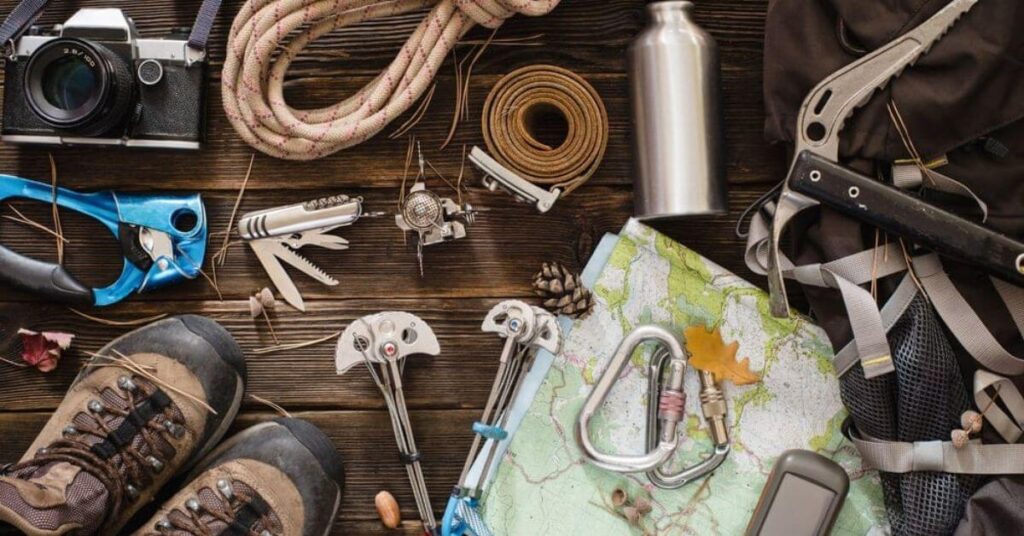Hiking is one of the simplest and most rewarding ways to connect with nature. Whether you’re venturing through forest trails, scaling mountain ridges, or taking a peaceful walk through the countryside, hiking lets you experience the outdoors at your own pace.
It doesn’t require expensive gear or extreme fitness just a sense of adventure and the right preparation.For first-time hikers, stepping into this new world can feel both exciting and overwhelming. You may wonder what to wear, what to carry, or where to go.
But with a little knowledge and some thoughtful planning, hiking becomes easy to enjoy. It gives your mind a break, boosts physical health, and brings fresh air and scenic beauty into your daily routine. This guide answers the question “what is hiking” by walking you through six key things every beginner needs to know.
From choosing your trail to packing smart and staying safe, you’ll gain the confidence to take your first step and many more after that. Hiking is not just a hobby. It’s a lifestyle that nurtures the body and soul.
1. Choose the Right Trail
The first step in your hiking journey is selecting a suitable trail. Beginners should look for marked routes with low elevation gain and clear pathways. Websites and apps like AllTrails and Komoot can help filter trails by difficulty, distance, and terrain type. Start with short hikes and build confidence before tackling longer or steeper paths.
Avoid overly ambitious goals on your first few hikes. Instead, focus on enjoyment and becoming comfortable with the basics. Consider factors such as weather, trail conditions, and available daylight. Planning around your energy level will make hiking more rewarding and less stressful.
2. Wear the Right Footwear
Proper footwear is essential. Ordinary trainers might work for city walks, but hiking demands more. Shoes should support your ankles and provide good grip on varied terrain. For beginners, lightweight hiking shoes or boots offer the right balance of comfort and safety.
Fit is key. Try shoes in the afternoon when your feet are slightly swollen to avoid sizing issues. Wear them on shorter walks before committing to a hike. Blisters and sore feet can ruin an otherwise perfect day. Prioritise function over fashion for a smoother hiking experience.
3. Pack Essentials Only
A well-packed daypack can make or break your hike. Keep it light but never skip the essentials. Start with water about one litre per two hours of hiking. Snacks like nuts, energy bars, and fruit keep your energy up. Add a basic first-aid kit, a lightweight rain jacket, sunscreen, and a charged phone or GPS device.
Don’t overpack. Carry what you need and nothing more. As you gain experience, you’ll learn what works best for your hiking style. Simplicity helps you move freely and enjoy the trail instead of constantly adjusting your bag.
- Water is key: Bring 1L per 2 hours of hiking.
- Fuel up: Pack nuts, bars, and fruit.
- Essentials only: First-aid, rain jacket, sunscreen, phone.
- Travel light: Carry only what you truly need.
4. Know the Weather Forecast
Always check the weather before you head out. Hiking under changing weather conditions can be risky, especially if you're far from shelter. Apps like AccuWeather or local trail websites offer real-time updates. Avoid hikes during storms, extreme heat, or icy conditions.
Layer your clothing so you can adjust to the temperature. Even if the day starts sunny, bring an extra layer and waterproof gear. Being prepared keeps you dry, warm, and focused on enjoying your hike not dealing with discomfort.
5. Follow Trail Etiquette
Respect nature and fellow hikers. Stay on marked trails to prevent erosion and protect wildlife. Yield to uphill hikers, and keep noise levels low. If hiking with pets, ensure they’re allowed and keep them leashed.
Leave no trace. Carry your rubbish with you, and avoid picking flowers or disturbing habitats. Good etiquette makes hiking pleasant for everyone and helps preserve the environment.
6. Stay Safe and Informed
Safety should always come first. Tell someone your route and estimated return time. Carry a map, even if you rely on apps. Learn basic trail signs and emergency signals. If hiking solo, stick to popular trails.
Pack a whistle for emergencies and understand your physical limits. If you feel unwell or unsure, it’s okay to turn back. Hiking is not a race; it’s about enjoyment and well-being. The more informed you are, the safer and more enjoyable your experience becomes.
10 Bonus Tips for New Hikers
Start early to avoid crowds and hike in daylight.
Heading out early lets you enjoy the peaceful morning air and quiet trails before they get crowded. It also ensures you finish your hike in daylight, reducing risks associated with hiking after dark.
Bring a reusable water bottle or hydration bladder.
Staying hydrated is vital while hiking. A reusable bottle or hydration bladder helps you carry enough water while cutting down on waste. Sip regularly to keep your energy up and avoid dehydration, especially on hot or long trails.
Stretch before and after your hike.
Stretching prepares your muscles for activity and helps prevent cramps or strains. A good warm-up improves circulation, and post-hike stretching reduces soreness and speeds up recovery, especially after climbing or descending tough terrain.
Keep a small towel or bandana for sweat.
A lightweight towel or bandana is handy for wiping away sweat on hot days or steep climbs. It can also be used to cool down by soaking it in water, protect your neck from sunburn, or serve as a quick face cover in dusty areas.
Invest in breathable, moisture-wicking clothes.
Choosing the right clothes makes a big difference. Breathable, moisture-wicking fabrics keep you dry, reduce chafing, and regulate body temperature. Avoid cotton, which traps sweat, and choose synthetic or merino wool materials instead.
Learn to read trail markers and signs.
Understanding trail signs helps you stay on the right path and avoid getting lost. Trail blazes, coloured symbols, and distance markers are your guides. Take a photo of the trail map before starting in case phone signals are unreliable.
Stay on the lookout for wildlife but don’t feed or approach them.
Spotting animals in their natural habitat is exciting, but keep your distance. Feeding or approaching them can be dangerous for you and harmful to the animals. Use binoculars if needed and respect their space at all times.
Track your progress with a hiking app.
Hiking apps let you monitor your distance, route, and elevation. They also offer offline maps, emergency features, and trail reviews. Tracking progress keeps you motivated and helps you plan future hikes with better insight and safety.
Take breaks and enjoy the scenery.
Don’t rush the hike pausing to take in scenic views, breathe fresh air, and rest your legs enhances the experience. Breaks help prevent fatigue and allow you to stay mindful, appreciate nature, and make the most of your journey.
Join a local hiking group for community and support.
Group hiking builds motivation, offers guidance, and boosts safety. It’s more than just companionship—it provides structure, trail tips, and lasting friendships. Joining local groups helps you explore confidently with others who share your love for the outdoors.
Hiking Essentials Things

Packing the right hiking essentials is key to staying safe and comfortable on the trail. Start with proper footwear hiking shoes or boots that offer grip and ankle support. Always carry water (1L per 2 hours), quick snacks like energy bars or fruits, and navigation tools such as a map or GPS app.
Layered clothing helps you adjust to changing weather, while a rain jacket prepares you for sudden showers. A basic first-aid kit, sun protection, a flashlight or headlamp, and a whistle for emergencies are must-haves. These hiking essentials make every trip smoother, safer, and more enjoyable.
Hiking Essentials Table
| Item | Purpose |
|---|---|
| Hiking Shoes/Boots | Support and protect your feet on rough terrain |
| Water Bottle | Prevent dehydration |
| Snacks | Maintain energy levels |
| First Aid Kit | Handle minor injuries |
| Rain Jacket | Stay dry during unexpected rain |
| Map/GPS | Navigation and trail tracking |
| Sunscreen | Prevent sunburn |
| Hat/Sunglasses | Protect against sun exposure |
| Mobile Phone | Emergency contact and GPS |
| Backpack | Carry all your essentials |
Final Words
Hiking introduces you to the joy of moving through natural landscapes on your own two feet. It’s one of the most accessible outdoor activities and opens the door to better health, sharper focus, and deep relaxation. Every trail you take builds confidence and inspires curiosity and this is truly the heart of the question: What Is Hiking?
You don’t need to be an expert to start. You only need the right mindset and some essential knowledge. By following the six must-know basics, you’ll avoid common pitfalls and gain a deeper appreciation for what hiking really is.
It’s not about how far or fast you go. It’s about tuning in to nature, disconnecting from stress, and finding peace in the journey. What Is Hiking? It’s a lifestyle, an invitation to slow down, breathe, and explore the world step by step. Get out there, take your first step, and let hiking reshape your everyday life in the most beautiful way.
Also Read: 10 Best Mountain Biking Spots Around the World
FAQs
What is hiking and why is it good for beginners?
Hiking is a simple outdoor activity that involves walking in natural settings like forests, hills, or mountains. It’s great for beginners because it doesn’t require expensive gear or advanced skills just a basic fitness level and a willingness to explore.
How do I choose the right trail as a beginner hiker?
Start with well-marked, low-elevation trails. Use apps like AllTrails or Komoot to filter hikes by difficulty. Choose shorter distances to build confidence and always check trail conditions and weather before you go.
What should I wear when hiking for the first time?
Wear breathable, moisture-wicking clothes to stay comfortable. Avoid cotton. Choose lightweight hiking shoes or boots that support your feet and ankles. Dress in layers so you can adjust to the weather.
What are the must-have items to carry on a hike?
Carry water (at least 1 litre per 2 hours of hiking), snacks, a first-aid kit, sunscreen, a map or GPS device, a light rain jacket, and a fully charged phone. Keep your pack light with only essentials.
How can I stay safe while hiking alone?
Tell someone your plan and expected return time. Stick to popular trails, carry a whistle and a map, and know your limits. Avoid hiking in bad weather and always be aware of trail signs and surroundings.
Why is trail etiquette important in hiking?
What Is Hiking? It’s more than walking it’s respecting nature. Stay on marked trails, carry out your rubbish, yield to uphill hikers, and leash pets. Observe wildlife from a distance and avoid feeding them. Good trail manners make hiking better for everyone.



